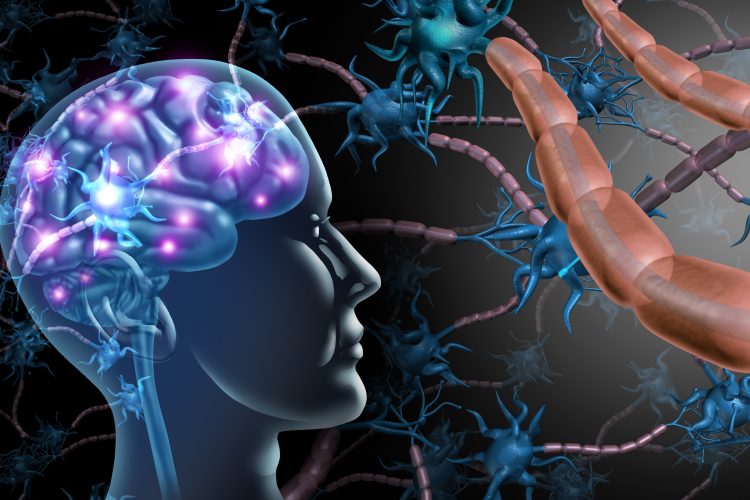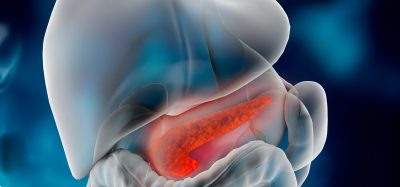Fighting MS progression: why GPR17 is the target to watch
Posted: 2 October 2025 | Anja Harmeier (CEO of Rewind Therapeutics) | No comments yet
Despite major advances in multiple sclerosis treatment, stopping disease progression has remained out of reach. Targeting the receptor GPR17 may harness the brain’s own repair system, offering the prospect of genuine remyelination and lasting benefit for patients.


Today, the prospects for people diagnosed with multiple sclerosis (MS) are far better than just 10 years ago. A wide array of disease-modifying treatments – from interferons to monoclonal antibodies and others – are now available, but a key development has been the approval of anti-CD20 monoclonal antibodies. Starting with Ocrevus [ocrelizumab] in 2017, they have proved to be highly effective in stopping relapse activities and thus keeping acute inflammatory disease symptoms under control.
Despite anti-CD20s stopping inflammation-driven relapses, they do not address the underlying pathology of MS: the progressive loss of the myelin sheath which protects and nourishes neurons.
But this development by no means signals ‘job done’. Despite anti-CD20s stopping inflammation-driven relapses, they do not address the underlying pathology of MS: the progressive loss of the myelin sheath which protects and nourishes neurons. Thus, patients with initial relapsing MS being treated with these antibody-based drugs will eventually go on to develop progressive MS, characterised by ‘progression independent of relapse activity’ (PIRA). For these aspects of disease activities there are still very limited treatment options.
Furthermore, there remains no way of arresting MS at its earliest stages, when myelin loss and subsequent neuronal death occurs but not to the extent that the patient experiences irreversible damage.
Automation now plays a central role in discovery. From self-driving laboratories to real-time bioprocessing
This report explores how data-driven systems improve reproducibility, speed decisions and make scale achievable across research and development.
Inside the report:
- Advance discovery through miniaturised, high-throughput and animal-free systems
- Integrate AI, robotics and analytics to speed decision-making
- Streamline cell therapy and bioprocess QC for scale and compliance
- And more!
This report unlocks perspectives that show how automation is changing the scale and quality of discovery. The result is faster insight, stronger data and better science – access your free copy today
Nearly one million individuals are living with MS in the US – incidence is similar in Europe – often affecting young adults in their prime of life. If we can slow, stop or even reverse MS-related myelin loss and nerve damage at an early stage, it would be a major win.
MS is caused by the loss of the myelin sheath surrounding nerve cells, often likened to the stripping of the rubber insulation cable around an electrical wire. Yet myelin does far more than insulate; it nurtures the nerve by providing metabolic support. Under normal circumstances damage to this sheath is quickly repaired, thanks to an important type of highly specialised cell called oligodendrocyte precursor cell (OPC).
However, people with MS experience a greater rate of myelin loss than normal and the repair process becomes compromised, so the remyelination process cannot keep pace with the rate of damage. As the disease progresses, damaged sites develop scar tissue called sclerotic plaques, which are much harder to repair. That hardening gives the condition its name – multiple sclerosis comes from the Greek sclerosis, meaning ‘hardening’. Eventually, the unprotected neurons die, resulting in a range of problems such as motor impairments, sensory disturbance (including to sight), cognitive dysfunction, digestive and bladder problems, fatigue and other symptoms.
An extensive body of work going back decades has established that the GPR17 receptor, a type of GPCR, plays a key role in regulating oligodendrocyte differentiation and hence remyelination.
While the sites and extent of demyelination varies, the repair process is identical not only for MS, but for a broad range of demyelinating disorders. OPCs move towards the damaged site, multiply and then differentiate through several intermediate stages into myelinating oligodendrocytes, which are capable of replacing the lost myelin sheaths.
An extensive body of work going back decades has established that the GPR17 receptor, a type of GPCR, plays a key role in regulating oligodendrocyte differentiation and hence remyelination. Studies have shown that high expression of GPR17 – which often occurs in OPCs close to demyelination lesions, as well as an intermediate-stage cell called committed oligodendrocyte precursors (COPs) – halts the development of these cells into mature oligodendrocytes and thus prevents efficient myelin repair.
Recently, Rewind Therapeutics demonstrated in a murine demyelination model that blocking this receptor with potent and selective orally-acting small molecule GPR17 inhibitors promoted functional and structural remyelination. The topline data were presented in an abstract at the Euroglia Meeting in Marseille, France, in July 2025.
It is often said that anti-PD1 checkpoint inhibitors ‘take the brakes off’ the patient’s immune system, allowing it to tackle tumours with much more vigour. Similarly, GPR17 blockade can be said to take the brakes off the transformation of OPCs and COPs into mature oligodendrocytes –helping to accelerate the process of myelin repair. This would fundamentally change the trajectory of the disease.
Other biotech companies working on GPR17 blockade (using different agents) to promote remyelination include Pheno Therapeutics (Edinburgh, UK) and Myrobalan Therapeutics (Medford, US).
At Rewind, we believe GPR17 blockade has potential to help MS patients – and patients with demyelinating disorders in general – throughout the whole course of disease.
At Rewind, we believe GPR17 blockade has potential to help MS patients – and patients with demyelinating disorders in general – throughout the whole course of disease, from the earliest to the later stages, both in combination with other treatments such as anti-inflammatory therapies or on its own, respectively.
There is particular excitement about the possibility of being able to help patients with early-stage disease. It will become more feasible to diagnose MS accurately at a very early stage, once the updated McDonald (diagnosis) criteria are implemented. This should lead to an earlier and increased number of people eligible for GPR17-based remyelination therapy.
Not forgetting the prospect of remyelination therapy for those with late-stage disease; post-mortem studies show GPR17 expression remains high in premature oligodendrocytes in the brains of patients who had advanced MS, especially around lesions, indicating that treatment with a GPR17 inhibitor could have a meaningful impact in patients with progressive MS, too.
There is still a substantial amount of work to be done. While some early-phase studies – such as those led by Ari Green (using clemastine fumarate) and Alasdair Coles and teams (with bexarotene) – have provided initial evidence of remyelination in people with MS, definitive proof of clinical benefit remains elusive. Still, there is no doubt that targeting GPR17 holds great hope for delivering such benefits with a treatment that targets the underlying neurodegeneration that drives progression in multiple sclerosis.
Meet the author


Anja Harmeier is an experienced drug developer, scientist and entrepreneur in neuroscience and rare diseases. She brings extensive R&D and operational capabilities complemented by a strong track record in company development and venture capital.
Anja joined Rewind from Pureos Bioventures where, as Partner, she was responsible for investments in innovative life sciences companies in the US and Europe including Vico Therapeutics, Corlieve Therapeutics (acquired by UniQure) and River Renal 2 and River Renal 3. Prior to Pureos, Anja held several positions at F. Hoffman-La Roche, initially joining the Neuroscience R&D group before working in positions of increasing seniority, including franchise and senior project leader in rare diseases. Starting in 2016, she served as an Investment Director at Roche Venture Fund, where she was on the Board of Directors at several of the fund’s portfolio companies, including Vivet Therapeutics (which Pfizer has an option to acquire), Entrada (IPO) and NMD Pharma.
Anja Harmeier holds a PhD in Neuroscience/Biochemistry from the Institute of Biochemistry at Freie Universität Berlin and an MBA from Instituto de Empresa (IE) Madrid.
Related topics
Autoimmune disease, Central Nervous System (CNS), Drug Discovery Processes, GPCRs, Neuroprotection, Regenerative Medicine, Translational Science
Related conditions
Multiple Sclerosis (MS)
Related organisations
Rewind Therapeutics
Related people
Anja Harmeier (CEO of Rewind Therapeutics)








